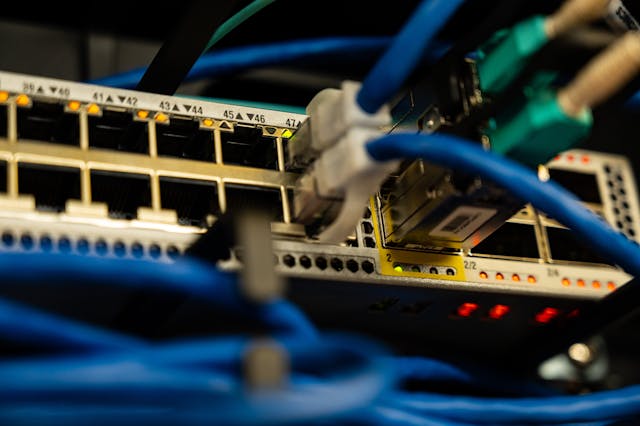Why???
…. “Networking” remains a timeless and strategic career choice because it is one of the few disciplines that underpins nearly every aspect of our modern digital lives – yet operates almost entirely behind the scenes. Let me explain ….
In today’s digital age, accessing resources is often just a click away. You power on your home router and connect effortlessly; you open Netflix, stream YouTube, or watch live sports – whether on your phone, laptop, or even your television, which itself relies on network infrastructure. At the same time, developers seamlessly deploy cloud applications, launch containers, or manage infrastructure as code, treating the network as an ever-present utility – abstracted, highly available, and largely invisible. This frictionless experience can make it easy to overlook, or even question, the relevance of traditional networking. Yet behind this convenience lies a complex and robust architecture – the network – which continues to serve as a vital foundation of our modern digital world.
Tasks like configuring subnets or VLANs (😄 often conceptually equated to security groups or resource groups in SOME cloud environments), along with traffic routing, logging, monitoring, access control, and firewall management, are now frequently executed through intuitive graphical interfaces. Yet, a solid grounding in core networking principles remains indispensable for IT professionals operating in today’s increasingly abstracted and interconnected environments. This foundational knowledge enables them to design with purpose, see beyond the interface, troubleshoot with accuracy, and maintain the reliability and security of complex, dynamic systems.
It’s important to emphasize that networking is far from obsolete – it’s more critical than ever. Its reliability, availability, and especially its SECURITY (🔐 emphasis on SECURITY 😄) support everything from hospitals, movie/sports streaming, online gaming to university systems, power grids, oil refineries, traffic lights, railways, air traffic control, 911 services, financial networks, and even national security. The smooth functioning of these systems – and countless other essential and needed services—relies on secure, expertly managed, and highly redundant networks.
🎯Looking Beyond the Surface
When discussing networking in the realm of electronic and computer-based communication, recognize that enterprise needs are diverse – and the systems supporting them must be thoughtfully tailored to suit each unique environment. Relying on “outsider” opinions – especially from those not directly engaged in the day-to-day realities of network operations – often results in misguided conclusions. Only someone distanced from the task of securing, maintaining, and optimizing modern infrastructure would suggest that “networking is dead.” Such claims ignore the intricate, evolving, and indispensable role networking plays as the backbone of today’s socio-economic systems.
When tasked or employed to design, build, or maintain such systems, it is essential to possess grounded, objective knowledge to make well-informed decisions. Placing full trust in vendor-driven narratives or educational content – from cloud providers, MSPs, ISPs, or OEM vendors – can result in biased viewpoints, as such materials are often shaped by commercial motives. Much like a barber who always insists you “need a haircut,” their messaging is typically crafted to spotlight issues their own solutions are designed to address – often at a cost.
To make informed decisions, professionals must rely on independent, vendor-neutral sources grounded in credible research and real-world experience. Entry level certifications like Cisco’s CCNA and CompTIA Network+ curriculums provide structured training in core networking concepts, based on widely adopted industry standards. These curriculums, while not fully brand-agnostic, are structured such that the knowledge gained – especially from leading vendors like Cisco – often applies across other vendor platforms due to shared protocols and best practices.
Armed with this knowledge, professionals can think critically, design solutions, troubleshoot effectively, and make platform-independent decisions that strengthen the networks they support.
🔧 The Hidden Complexity of Modern Networks
Modern network design focuses on utility – delivering what’s needed, when it’s needed – while hiding complexity from end users. Anything not directly tied to the user experience is deliberately abstracted.
Consider your home internet connection, it give you access to services you require on demand. The services you use – cloud computing, email, streaming, video calls, banking – may live in network architectures like spine-leaf topologies, Virtual Extensible Local Area Network (VXLAN), Multiprotocol Label Switching (MPLS), or Internet Protocol Security (IPSec) tunnels, all working behind the scene to bring your these services. These infrastructure run silently in the background, integrated into services you rely on. You’re not aware of them, nor expected to be—and that’s intentional. It all works seamlessly thanks to the behind-the-scenes efforts of network engineers, administrators, and architects.
From Netflix and WhatsApp to universities, airports, social media platforms, utilities, credit card transactions, virtual classrooms, news broadcasts, power grids, water systems, traffic control, and law enforcement communications—nearly every aspect of modern life depends on networking. This includes 911 emergency services, hospital information systems, connected medical equipment, telemedicine platforms, public transit systems, smart home devices, industrial automation, and even national defense infrastructure. These critical services operate seamlessly thanks to the robust, intelligent, and often invisible networks that support them.
Ironically, its invisibility leads some to believe networking is obsolete. In reality, this seamlessness reflects not just its sophistication, but the rock-solid stability it delivers. Claims that “networking is dead” miss the point—it hasn’t disappeared; it has evolved into the silent backbone of our always-connected world.
Behind the scenes, it is networking professionals who design, manage, and maintain these critical systems—ensuring they remain secure, stable, and always available.


